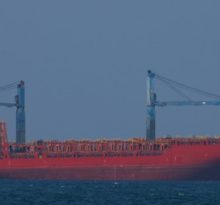Oil Prices Edge Higher Amid Kazakhstan Supply Disruption, Long-Term Gains Remain Uncertain

Brent crude prices saw a modest increase on Tuesday, continuing the upward momentum from the previous session following a drone strike on an oil pipeline pumping station in Russia. This incident led to reduced crude flows from Kazakhstan, contributing to short-term price support. However, the potential for increased supply in the near future limited further gains.
As of 0758 GMT, Brent crude futures climbed 23 cents, or 0.3%, reaching $75.45 per barrel. Meanwhile, U.S. West Texas Intermediate (WTI) crude futures were up 75 cents from Friday’s close, trading at $71.49 per barrel. There was no settlement for WTI on Monday due to the U.S. Presidents’ Day holiday.
According to IG market strategist Yeap Jun Rong, oil prices have recently been driven by supply expectations. The recent downturn in prices was met with a shift in sentiment following reports of a drone strike on Kazakhstan’s export pipeline in Russia, which provided temporary support for crude markets.
A Russian official confirmed on Tuesday that Ukrainian drones targeted a pipeline in Russia, responsible for transporting about 1% of the global crude supply. The official warned that the attack could impact global markets and have repercussions for U.S. companies.
Despite the disruption, sources familiar with the situation indicated that the Black Sea CPC Blend oil loading schedule for February would remain unchanged.
Looking ahead, analysts suggest that any sustained price increases may be limited. The market anticipates a potential rise in oil supply from OPEC+ and Russia, while concerns about demand recovery, particularly from China, persist amid uncertain economic indicators.
BMI analysts project Brent crude to average $76 per barrel in 2025, a 5% decline compared to the 2024 average, citing market oversupply, ongoing tariffs, and trade tensions as key contributing factors.
A report from Russian state media indicated that OPEC+ producers currently have no plans to delay the phased monthly oil production increases set to begin in April. Previously, OPEC postponed these planned supply hikes until April due to weak demand and growing non-OPEC supply.
Investors are also closely monitoring diplomatic efforts to ease tensions between Russia and Ukraine. U.S. and Russian officials are scheduled to meet in Saudi Arabia later on Tuesday, raising speculation about potential progress in peace negotiations.
Sparta Commodities analyst Neil Crosby noted that bearish factors continue to weigh on crude markets, with the outcome of Ukraine-related discussions playing a critical role. A resolution could lead to an increase in Russian oil supply entering legitimate markets, though the final outcome remains uncertain.
Risk Warning: CFDs are complex instruments and come with a high risk of losing money rapidly due to leverage. 80.25% of retail investor accounts lose money when trading CFDs with this provider. You should consider whether you understand how CFDs work and whether you can afford to take the high risk of losing your money.
Disclaimer: This text constitutes marketing communication. It is not any form of investment advice or investment research or an offer for any transactions in financial instrument. Its content does not take into consideration individual circumstances of the readers, their experience or financial situation. The past performance is not a guarantee or prediction of future results.






